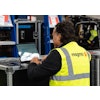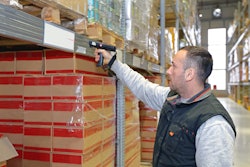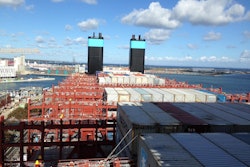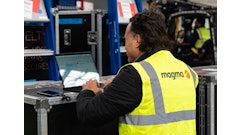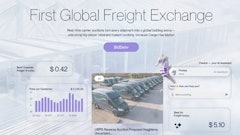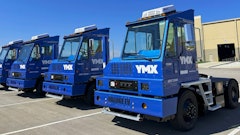
Today’s food supply chain planning and execution tools allow service providers to grasp changing consumer needs and respond to them fast enough to guarantee satisfaction, thereby enabling the organization to operate efficiently and sustainably. Each node along the chain–growers, processors, packagers, distributors, retailers and transporters–can function at a speed and level of accuracy not imagined five years ago.
As software tools improve, the different “nodes” in the supply chain–growers, processors, retailers, etc.–are increasingly integrating data systems with one another to a degree not previously witnessed. The growing demands for quality, safety, transparency and visibility are driving this change.
The profile of the supply chain toolkit itself has risen in many corporate board rooms. Food company information technology directors are ensuring that supply chain management systems integrate with just about every business function. Software tools continue to adapt to a rising array of material handling sensors to ensure all relevant data gets included in the supply chain manager’s toolkit.
A series of interviews with food supply chain decision makers confirms that the “always on supply chain” is already a reality. The “always on supply chain” concept, articulated in the Material Handling Institute’s 2016 Annual Industry Report on page 14, notes these networks deliver a continuous, high-velocity flow of information and analytics, creating predictive, actionable decisions that better serve the customer.
All parties agree that actionable information is one of the most important requirements in today’s supply chain.
Every year, software providers introduce new modules to give customers faster and easier access to information that allows them to execute tasks more effectively. Some of the newer offerings allow IT managers to provide departments the reports they need faster so that the department heads are spending less time organizing information and more time analyzing and acting on it.
Analytics Drive Change
The power of analytics, along with the expanding digital capabilities of cloud-based solutions, is delivering more robust insights for supply chain operations.
Some companies are reporting that data that once took as long as two weeks to generate is now available in minutes. Analysts are able to generate their own reports without having to rely on IT departments.
Companies can do things like improve forecast accuracy by identifying biases in how forecasts are created. Sales, for instance, can bias forecasts.
The Hershey Company, a global confectionery and snacks manufacturer, has witnessed consistent market share growth thanks to its ability to derive insights from data, according to John Bilbrey, chairman, president and CEO. The company recently signed on to implement SAP’s S/4HANA ERP platform to help its employees move from being reporters of data to active decision support in real time based on data integration from both internal and external sources.
When asked what area of the business gained the most from his enterprise connectivity vision, Bilbrey’s answer was the supply chain. Improved visibility allowed the company to avoid 20 million pounds of otherwise wasted corrugated cardboard in shipping and merchandising. And, they are looking forward to even more end-to-end visibility into the supply chain as the ERP initiative progresses.
Bilbrey says the company also has a better handle on how consumer relationships with food are changing. Hershey can now provide more transparency about its products to consumers. “Companies have done a terrible job with transparency,” Bilbrey says.
Hershey led the charge to design and implement the soon-to-be industry standard SmartLabel, which enables consumers to get details about products by scanning a QR code on packaging. “The noise went down and the dialog became constructive,” Bilbrey says. “Trust begins to come back when you have accessibility to information.” He says the company is now more “outwardly focused.”
Hershey first addressed its demand planning issues a few years ago when it deployed the demand planning module from JDA Software, says Carlos Amequita, Hershey’s chief information officer.
Food Maker Improves Fulfillment
Goya Foods Inc., the Hispanic food manufacturer, packager and distributor, has found demand planning and warehouse management software critical in expanding its fulfillment capabilities, says Peter Unanue, executive vice president of operations and logistics. Eighty-five percent of the company’s business is in direct store delivery, but the company plans to expand into e-commerce, allowing customers to order food online and have it shipped to them.
With eight manufacturing facilities and 12 warehouses, Goya Foods was able to improve its store delivery performance from 94 percent to 99 percent in the past five years, Unanue says. By deploying JDA Software’s demand planning, fulfillment, order optimization and demand classification modules, The company was able to reduce its inventory by 20 percent while improving service in the five-year period.
WMS software has been crucial to maintaining inventory rotation, visibility and warehouse operations performance, Unanue notes.
“Suppliers are being asked to acknowledge orders in a timelier manner, provide accurate shipping and delivery information and earlier notification of pricing discrepancies,” says Peter Zaballos, senior vice president and chief marketing officer at SPS Commerce Inc., a supply chain solutions provider.
Continued pressure on profit margins has companies looking deeper into how their operations run and how much money is tied up in which process, Zaballos continues. “We see a lot of interest from grocers and foodservice distributors looking at warehouse operations to further automate the receiving process. The goal is to lower safety stock and on-hand inventory.”
Supply chain strategies can ensure trust between partners that orders will be shipped in full and on-time, Zaballos says. Improved collaboration between partners covers order status, order discrepancy resolution and sharing sell-through data from a point-of-sale system so that both parties can take advantage of changing consumer buying patterns.
While management tools are evolving, the relationships among supply chain partners are changing as consumer needs also evolve. The most visible change is e-commerce, which requires multi-channel fulfillment. Other changes include the continuing expansion of foodservice at the expense of retail, and ongoing growth in convenience stores.
With e-commerce expanding, distribution strategies are becoming more diverse. The need to support more distribution channels requires more processes.
How to Leverage Inventory
Companies embracing e-commerce find the data requirements extend beyond order fulfillment and delivery. “From an e-commerce standpoint, a lot of food companies are focusing more attention on providing their customers resources around recipes versus ordering products and delivering products,” says Henry Canitz, product marketing director at Logility, a software provider.
“You don’t want to have dedicated inventories for an e-commerce channel, especially when you have shelf-life issues,” he says. “You have to be able to use that inventory in other ways if demand doesn’t show up. You have another demand stream you’ve got to include into your planning and maintain the flexibility.”
“Where you position the inventory is critical, so you can use it both in foodservice or retail and e-commerce if necessary,” Canitz notes. “Where you have your safety stock may change. That’s where the optimization side comes in.”
“You’re starting to look at very complex distribution networks across multiple channels,” Canitz continues. “You want to provide a certain level of customer service, but you don’t want to grow your inventory when you do that.”
“If you use a multi-echelon inventory optimization solution, you’re able to optimize the waves and where and how much inventory you’re storing to be able to meet the demands of all of your channels,” he says.
Market Conditions Drive Change
Some food manufacturers are finding centralized distribution more efficient than direct-store delivery (DSD). While this is not necessarily a technology-driven trend, changing market conditions have to be considered in supply chain planning.
“There is a macro trend for more sophisticated convenience stores with a broader assortment of products and more fresh foods,” says Chad Collins, chief operating officer at HighJump Software Inc. “This is actually driving higher penetration of DSD as DSD tends to be a primary replenishment model for convenience stores.”
Zaballos of SPS Commerce adds that restaurants and hotels are changing from using distributors for perishable food products to direct orders with regional growers and suppliers.
One of the biggest factors driving supply chain optimization is the proliferation of additional SKUs, Collins says. In response to consumer demand for natural and organic products, many food manufacturers are diversifying their offerings, resulting in a broader set of products to manage.
“Often these new products don’t have historical demand patterns and it can be difficult to accurately manage inventory levels,” Collins says. “As consumers become more accustomed to purchasing food online, we will see food manufacturers ship smaller quantities and more frequently to manage e-commerce replenishment cycles.”
“Managing productivity and profitability is a key in the food supply chain,” says Joe Scioscia, vice president of sales at VAI, a software provider. “An essential KPI (key performance indicator) for manufacturing is the amount of product produced. The count [good or bad] typically refers to either the amount of product produced since the last machine changeover or the production sum for the entire shift or week.
“Many companies will compare individual worker and shift output to invoke a competitive spirit among employees,” Scioscia continues. “For distributors, picking and shipping accuracy and productivity is the key to getting vehicles loaded and on their way.”
Everyone agrees that today’s technology offers more opportunities to improve service and efficiencies. The expansion of software capabilities, however, tasks decision makers to a greater degree.
The ‘Extended Enterprise’ Arrives
Sesh Rao, Ph.D., senior director for supply chain product management at Infor, a software provider, refers to the move as the “extended enterprise,” and “digitizing the extended enterprise.” The extended enterprise includes the manufacturer’s supply chain as well as that of its trading partners, vendors, distributors and retailers. The new availability of information is making it imperative to drive the planning and execution faster and more completely.
“The customers are demanding more in terms what’s in their food …where is it sourced from. To get that response and that kind of traceability requires a pretty good integration between planning and execution,” Rao says.
If there are any changes to be made in the movement of product, supply chain players would benefit immensely from executing these changes immediately. “If there’s a supply disruption, if there’s an inventory imbalance, if there is a shipment reallocation that needs to be done, then people would actually like to do that now,” he says. “Otherwise that particular demand opportunity is lost and customer service levels drop.”
“There’s no longer that luxury of generating a plan, then the plan gets refreshed once a day or maybe twice a day,” Rao says. “There is this whole need of trying to do the plan and replan in a very agile way, integrating planning with execution. That is a fundamental shift. If I don’t do it, I lose the opportunity. That’s the difference these days.”
“There’s a lot of data that gives new chance to give real-time analytics,” Rao continues. For example, in forecasting, it’s not just a matter of looking at historical forecast. There is a lot of unstructured data in the network such as Facebook likes, Twitter feeds, portal visits, omnichannel buying and other information that now needs to be factored.
“That becomes a formidable demand sensing problem,” he observes. “On the supply side, there is so much supply chain intelligence that is out there in the network in terms of supply disruptions, shipments, orders, exceptions and so on that need to get monitored and acted upon to do agile supply rebalance. It’s affecting everybody.”
A quarter of the leading manufacturers and retailers will be sharing distribution networks in the next 10 years, digitizing with new technologies based on Big Data, mobility, cloud, the Internet of Things (IoT) and hyperconnectivity, Rao predicts.
Infor’s acquisition of GT Nexus has brought additional supply chain intelligence, inventory management, supply chain visibility, transportation management and supply collaboration capabilities to complement Infor food and beverage supply chain management solutions for various market segments such as bakery, confectionery, beverages, brewery, dairy, prepared/chilled foods, meat and poultry, food ingredients, wine and spirits.
Variables Complicate Optimization
Today’s decision makers are challenged to find software that can analyze all of the critical components of their supply chain at the same time, says Tony Blasetti, an associate partner for supply chain solutions for IBM Corporation. Because of the number of variables in supply chain operations, analysis requires highly complex algorithms, and even then, true optimization is not achievable.
“In reality, my starting point determines my end point,” Blasetti says. As a result, identifying the most cost and service effective supply chain strategy is an iterative process, eventually converging on a solution that meets the business needs.
Blasetti describes supply chain planning today as a “highly complex, multi-variable challenge involving suppliers, service providers, inventory, transportation, distribution, capital funds, labor and customer relationships.”
Consultants Play A Key Role
Consultants play an important role in helping food companies utilize quickly evolving supply chain technology.
“If you have a good sales and operations planning (SNOP) system linked to your product development process, you can show how a product was developed from the inception of an idea to manufacturing and where the materials are sourced from, providing reliable supply chain traceability for food ingredients and allowing companies to quickly address product safety concerns,” says George Young, a founding partner at Kalypso, a global consulting firm.
He says Oracle’s Demantra software, especially when combined with product lifecycle management (PLM) software, provides full supply chain traceability.
“If you think you have a problem, you can find out more quickly if you use Demantra,” Young says. “But most importantly, you can proactively prevent food safety incidents by having traceability to your supplier.”
Young says the demand management software has algorithms tailored to discrete manufacturing and processing industries. “You can do ‘what if’ scenarios; you can figure out where things should go under certain scenarios,” he says.
For example, if a food manufacturer expands to a new territory, an ERP solution would allow them to figure out costs and how to manage the distribution serving of the new territory. It could take weeks to run 20 to 30 distribution scenarios.
“With ERP, you have to do sequential iterations of each potential outcome,” Young says. “With something like the Demantra advanced planning software, you could put in all the different parameters, and the software has built-in optimization algorithms. You could simultaneously optimize on a number of different factors including cost, time, number of events and so on, accelerating the analysis of multiple scenarios and identifying the optimal distribution option.”
With such a system, a user can run the algorithms and get one answer. “You can have the answer more quickly with greater detail, and make better decisions,” Young says. “If you are just relying on core ERP to perform a similar analysis, you are looking at a much more time-consuming process and results that carry greater fallacy risk due to high human involvement in analysis setup and data manipulation versus automated optimization analysis processing like with Demantra. Because of this, many companies that don’t have a demand planning solution don’t perform this type of analysis at all.”
“With the advent of the Food Safety Modernization Act in 2016, such solutions become more critical and will help manufacturers more easily collect and track ingredient or component origination, facility storage, facility processing, etc. information from their supply chains’ partners, allowing them to provide the required proof of forward and backward lot traceability,” Young says.(See story on page 26).
How Data Visualization Software Empowers Food Supply Chains
Data visualization software makes it easy in any work environment to provide interactive maps, charts and infographics displaying the most important KPIs to all who need to know. Such tools improve visibility to manufacturers, distributors, retailers and other supply chain personnel. Users can import data from various sources for conducting analysis using dashboards.
Many warehouses are finding it useful to have digital screens mounted in strategic locations to allow pickers to monitor their own performance, says Kerwin Everson, vice president of supply chain solutions at RMG Networks, a provider of data visual solutions.
By combining hardware and software, and business applications, RMG provides an integrated solution for supply chain operations. The software can collect data from disparate systems and organize the data in visual formats to make the data “actionable.”
Warehouse work stations that can utilize such tools include receivers, replenishers, pickers, inductors, sorters, packers, shippers and more.
“We see unique needs for unique data,” Everson says. “While they’re planning that warehouse or distribution center layout, why not plan for unique visibility in the supply chain? The more you get this out there, where the action is happening, the more it impacts your visibility and performance, and therefore, ultimately, your bottom line.”
Food warehouses sometimes have unique needs, he says. Sometimes screens need to be encased in special National Electrical Manufacturers Association rated enclosures to prevent contact with food. “They obviously had to be careful about hosing down TV screens, so special stainless steel enclosures were provided,” he says for one condiment manufacturer he visited. “There are all kinds of special concerns when it comes to the food industry.”
GS1 Global Standards To Change Food Distribution
Chris Anatra, president of NECS, which provides software for food distributors, believes the GS1 global standard for foodservice distribution is one of the most significant market forces affecting the foodservice industry. “All foodservice suppliers must be aware of this and what’s soon coming,” he says. GS1 is a global organization that develops and maintains standards for supply and demand chains across multiple sectors.
All foodservice distributors will need to know their GTIN (Global Trade Item Number) for every item they sell. “Their internal item numbers are going to become meaningless as the industry adjusts to these global standards,” he says.
Once they have the GTIN, they can obtain: official item images from the manufacturer; official brand logo; allergens; nutritional data; ingredients; pallet configurations, case dimensions, weights; official item descriptions (long and short), class, pack size, manufacturers product code; kosher, gluten free, wheat, sulphites, soy, etc.; shelf life; storage temperature; expanded "benefits" descriptions more fully explaining the items; and hundreds of other details about the items.
They will also need to obtain a Global Location Number (GLN) for each of their warehouse locations. “This will allow for traceability in the supply chain,” Anata says. “In fact, the location of each restaurant/grocery store/etc. which purchases this item will need to have a GLN. And of course the manufacturing facility needs one as well.”
Distributors will need access to the Global Data Synchronization Network (GDSN) which holds all of this data.
Benefits from the GDSN network include: improved visibility into product movement; operational efficiencies in receiving, inventory management, picking, and shipping processes; reduced errors in mispicks and shorts; optimized delivery logistics; reduced order and billing errors; faster new product introduction through the exchange of accurate product information; better product and location identification throughout track and trace processes.

